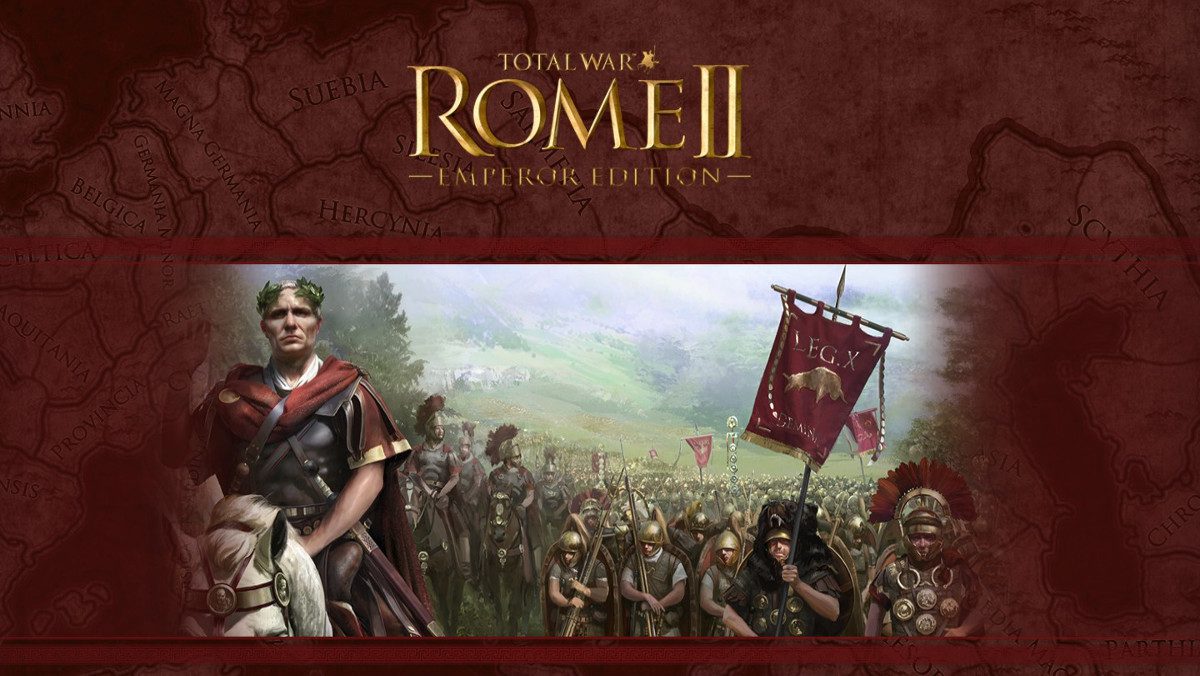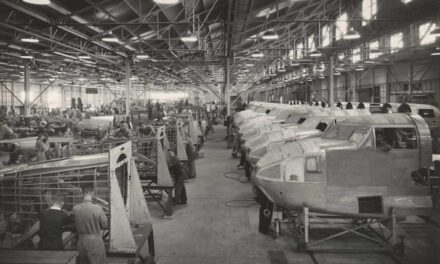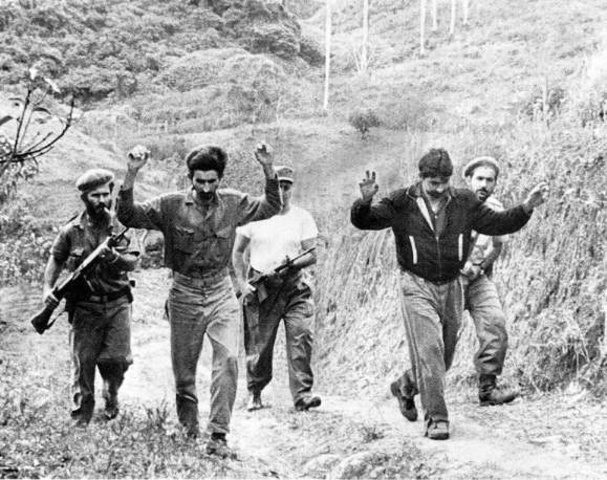By Fergus O’Sullivan.
Here at the History Guild we like video games, especially ones with a historical setting. Of course, plenty of games marketed as historically accurate aren’t, especially to history enthusiasts. In this series, we’ll be taking a look at some of the bigger games around and seeing if they’re really as true to history as they claim to be. In this article, we’ll be strapping on our gladius and putting Total War: Rome 2 through our historiographical wringer.
We’ll be doing so by playing the game as faithfully to history as we can. Instead of a beginner’s guide or a powergaming strategy, we’ll have some hefty tomes at our disposal. However, our main inspiration will be the fantastic podcast series The History of Rome. Recorded between 2007 and 2012 by Mike Duncan, it’s an authoritative source for anybody looking for a sweeping history of the Roman Empire and we’ll be putting in references to specific episodes for anybody looking to check our facts.
In this article, we’ll focus on Rome’s consolidation of Italy and the Punic Wars, which we’ll end up finishing a lot sooner than the actual Romans did thanks to a few shortcomings in the game’s artificial intelligence. Apparently, no artificial intelligence would ever be crazy enough to march its elephants over the Alps. Not sure if that speaks in Hannibal’s favour or not.
About the Game
Total War: Rome 2 wasn’t received too well when it came out in 2013, thanks to a massive amount of bugs and gameplay issues. After a five-year campaign of bug fixes and other improvements by the Creative Assembly, the developer, it now plays a lot better, and it’s recognized as a worthy installment in the fantastic Total War series.
Italy, 272 BCE
The game starts with us in charge of the Roman Republic as the House of Junia, the same family as the man who drove the last of the kings, Tarquinius Superbus, from Rome two centuries before. We could have also gone with the Julii, of Caesar’s fame, but we liked the idea of being from a line of aspiring king-killers; it was a Junius that did for Caesar, too.
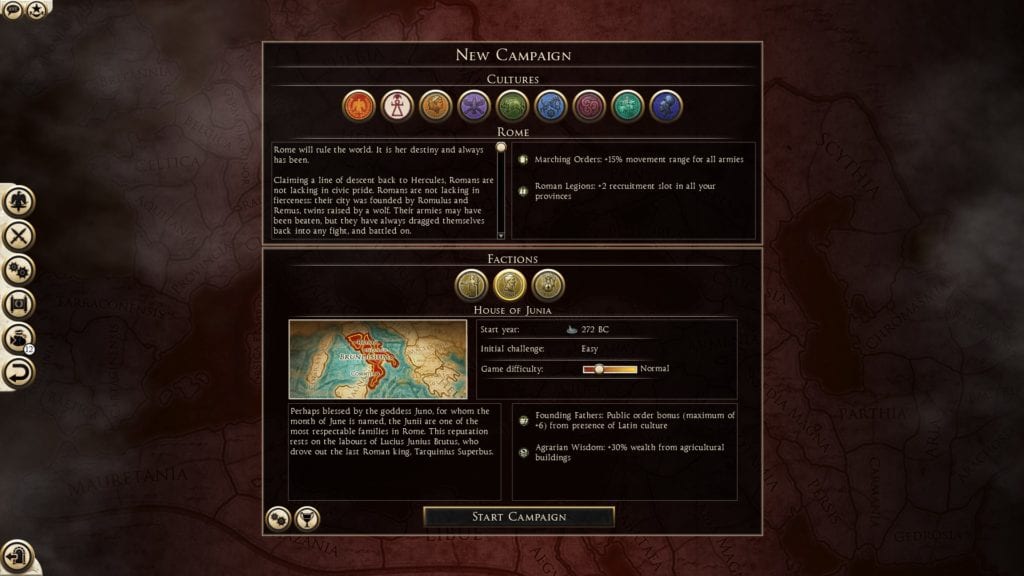
In the games prologue — which served as the tutorial — we played one of the most important chapters of early Republican history, crushing the Samnites, a hill tribe that gave the Romans over fifty years of trouble (check out the podcast’s episodes from 12 to 16 for more about this). Now, however, we’ve made a jump in time of about thirty years and are in charge of an almost unified Italy.
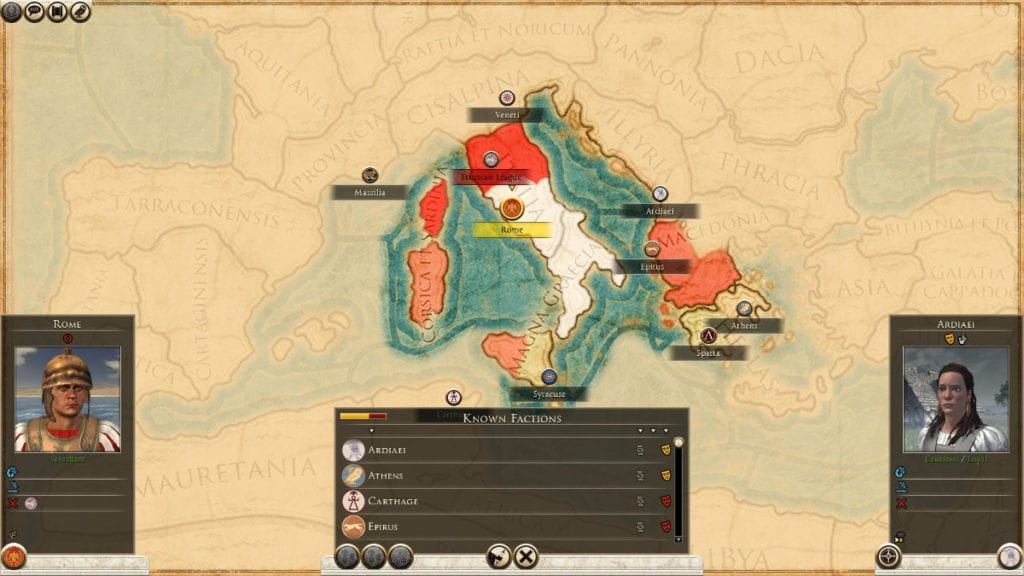
According to the game, Roman territory spans the lower half of the Italian boot up to just north of Rome, where the Etruscan League holds sway. Sicily is split roughly in two, with the western half belonging to Carthage and the eastern half belonging to Syracuse.
As the game starts, we’re given a mission by the Senate, which orders us to fully own two provinces. In Rome 2, the world is divided into provinces, with each being split into two, three, or four parts, each run by a city. A look at the image above shows that we own part of “Italia” and part of “Magna Graecia,” and that we in both cases need two more cities in each, for a total of four, to achieve this goal.
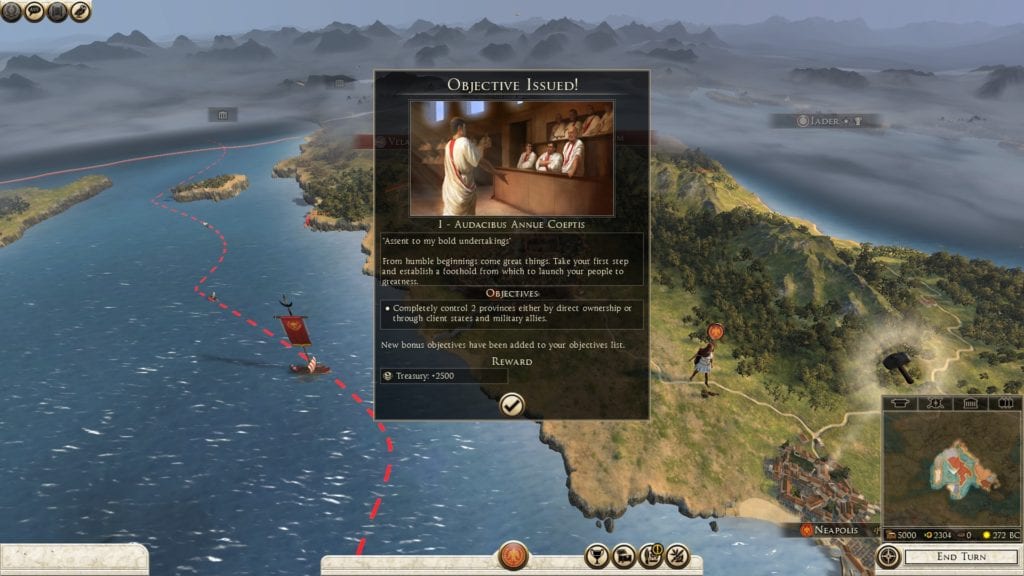
Before we get into the action and explain what we’ll be doing, why and how, let’s first get all kinds of nitpicky. We understand that choices need to be made when designing a game, but we feel Creative Assembly was just downright sloppy here in parts. For one, Sicily should not be part of Magna Graecia. It was — and in many ways is — culturally different from Italy and Greater Greece. It was considered its own entity then, and we doubt any Roman, Greek or Carthaginian would have confused Sicily with Magna Graecia.
We take similar etymological umbrage at the use of the term “Italia” for Rome’s province. The Romans used the word as a geographical distinction for the whole boot from the Alps on down, and probably not until a while later than when the game starts. Then and now, the name of the region Rome lies in is Latium, and the area just south of it is Campania, with Napoli (Neapolis) as its capital.
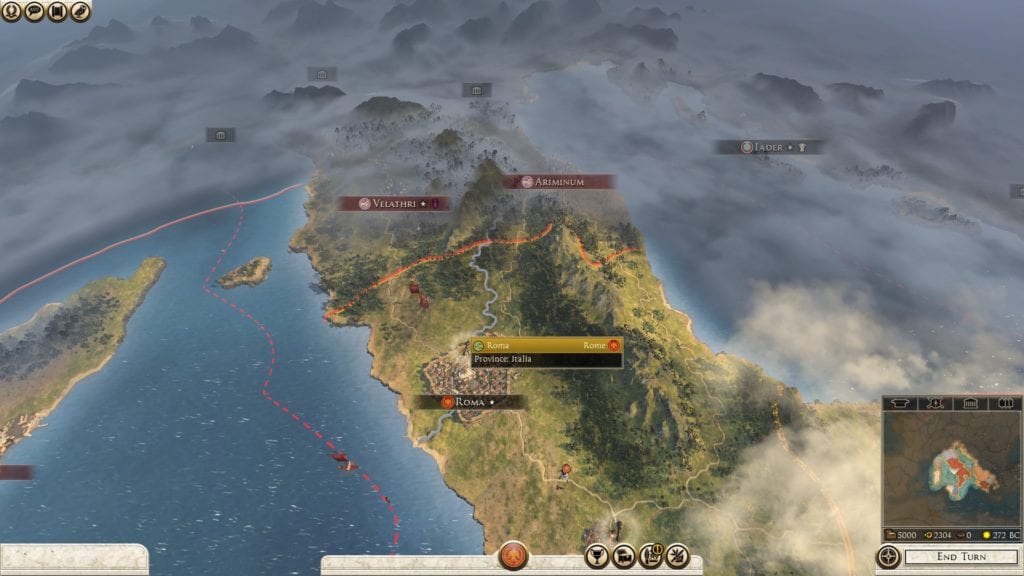
With this whirlwind tour of minor details out of the way, let’s talk about a bigger issue, namely the Etruscans. Duncan spends a lot of time talking about them until the fall of Veii in episode 9, little more than a century before the start of the game, but then falls silent, mainly because his sources do.
One of the biggest shames of European history is that we know so very little about this ancient civilization. We know the Etruscans influenced much of Roman culture, institutions and language and so our own as well, but anything more than broad strokes is just a question mark.
What we do know, however, is that by 272 BCE, the Etruscan flame had been pretty much extinguished and the remaining cities of the Etruscan league (most likely more than the two on the map) had been made into clients of Rome. So, it remains a mystery why we start the game at war with them, and they manage to put up quite a fight, too. Also, Corsica by this time had fallen under Carthaginian dominion. Carthage never turned up its nose at easy pickings.
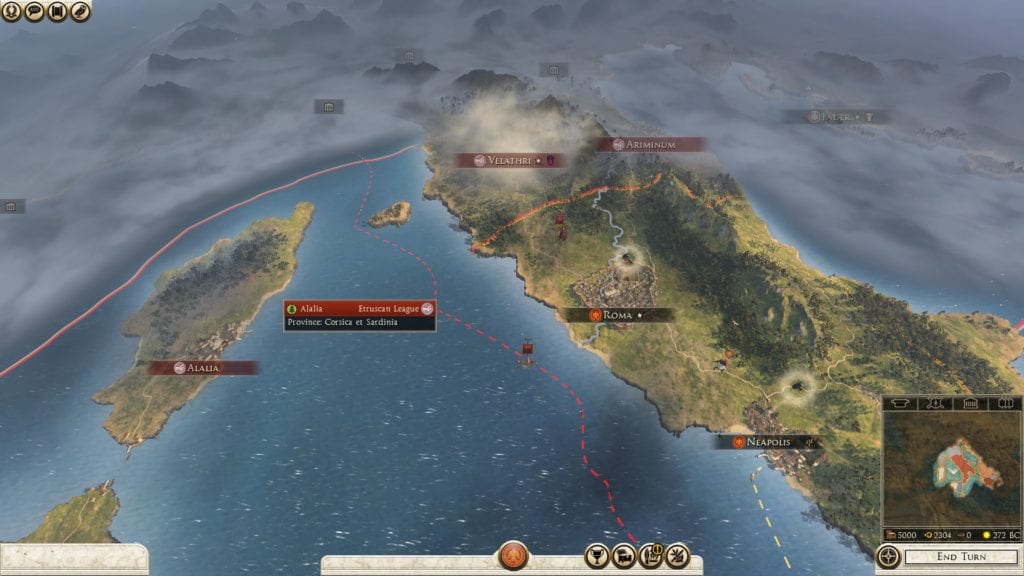
Unifying Italy
With the setting out of the way, let’s get back to the game. At this point in time, the big event for Rome is the Punic Wars, on which we want to get sooner rather than later; the first one is due to start in just eighth turns. Before we can do that, though, we need to take out the Etruscans, hopefully without provoking the Gauls.
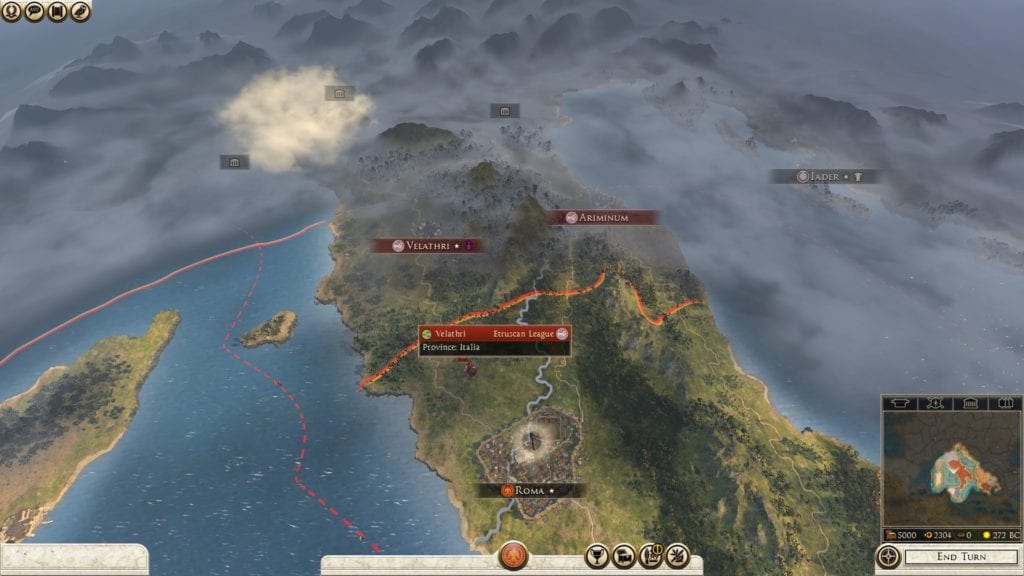
As these events didn’t happen in real life, we’ll skip ahead to the part where we poke the Carthaginian elephant, though we would like to note that, by all accounts, Rome was already trading with the tribes in northern Italy at this time, so it’s a bit weird that we don’t know what’s there.
The Punic Wars
With south and central Italy firmly under our control, we’ll turn away from the unwashed barbarians in the north and turn our attention to Sicily. We’re a few years ahead of actual events, the First Punic War lasted between 264 and 241 BCE, but all we need to do to conquer all Sicily is to take two cities from the AI. We won’t be slogging for years through the muck like the Romans did. For all the details, check out Duncan’s podcast from episode 19 onward.
Because of the game’s limitations, we’ll be condensing the three Punic Wars, which lasted well over a century, into one that will last just a few turns. This is for several reasons, the most important of which is the AI’s tendency to take the “total war” part in the title a little too seriously. Under no circumstance will the AI ever stop fighting. An army could be reduced to two naked dudes armed with spoons and they’d still throw any truce we offer back in our face. The niceties of diplomacy in the ancient world are lost on it.
The second problem is the lack of detail. The First Punic War lasted as long as it did because it was a mosaic of ever shifting alliances between Rome and Syracuse on the one hand, and Carthage on the other, as well as a host of other bit players. On top of that, there were also antagonists that came out of nowhere, like the mercenary band that took Messina and were the first to invite the Romans to the island. In the game, Sicily is just Carthage’s city and independent Syracuse; that’s it.

We won’t fault the devs too much, it must be hard to make any game, let alone one based on complicated ancient history, but it does make the game a lot less exciting when compared to the actual events. What’s also a shame is that there’s no way for us to recreate Hannibal’s journey over the Alps while playing as Rome, so we’re forced to skip that amazing episode for now.
To get back to the action: As we slapped the Etruscans around, we were building up our legion in the south of Italy and those troops were now ready to go. Unlike the real Romans, who had massive problems getting their soldiers to Sicily thanks to Carthage’s huge navy patrolling the seas around the island, we can just walk over the Messina Strait. The first port of call should be Messina, a city at the top right hand corner of the island, as that was Rome’s main base of operation. However, the Creative Assembly left it out, so all we need to do is move on Syracuse.
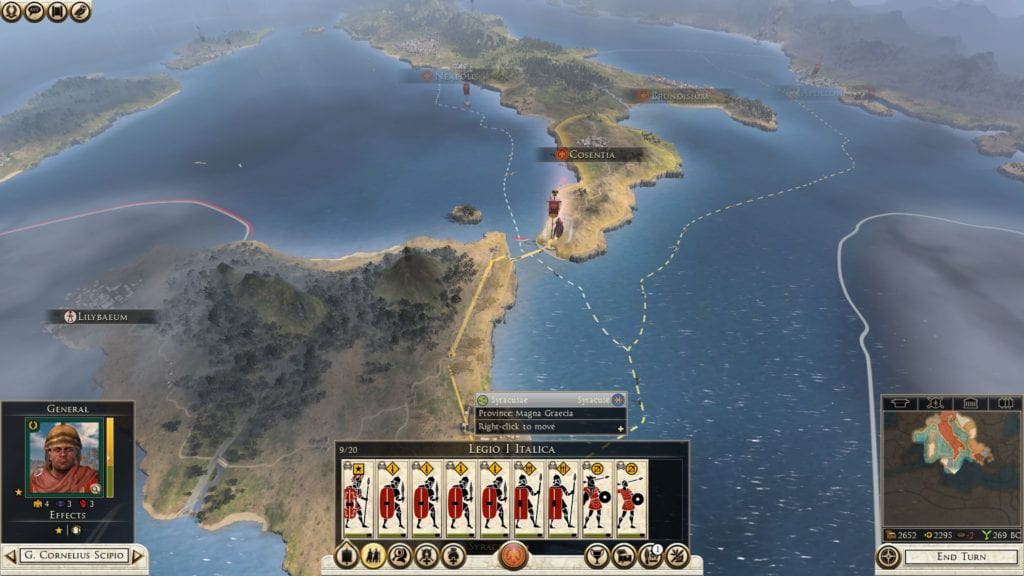
In real life, the Romans besieged Syracuse and forced its king, the fence-sitting Hiero II, to become an ally, a deal that ended up lasting fifty years. However, in the game we were offered a non-aggression pact by Syracuse on the first turn, which we ignored as it was rather out of character. Instead, we conquered Syracuse with a well-timed assault and made it into a client state as that was the closest we could get to a forced alliance.
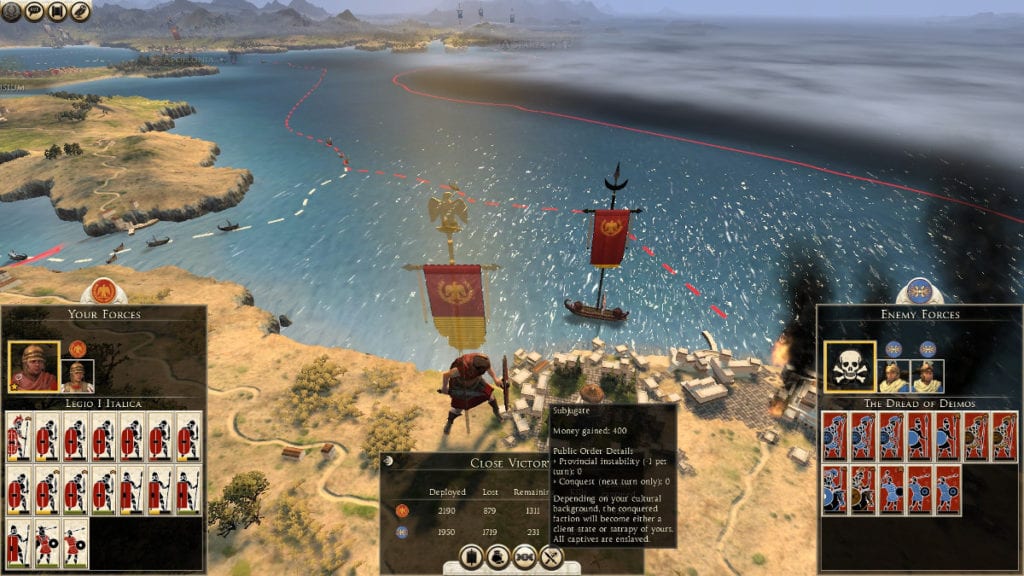
With the first half of the island under our control, we decided to take stock for a second. Unlike the historical Romans, we didn’t need to raise fresh armies every year, our soldiers would stick around forever if we needed them, and we had two medium-sized armies. Much like in real life, leaving the northern border undefended would be fairly stupid as the Gauls were always looking for weaknesses, so the army that trounced the Etruscans would stay up there.
That left us with just one small-ish army to take Carthage’s Siclian city. In history, the First Punic War lasted more than twenty years. This was because Carthage and Rome were extremely well matched both in resources as well as military wisdom. Carthage patrolled the seas around Sicily, making landings difficult, and its armies used the terrain against the Romans. Eventually, the sheer resolve and fighting spirit of the Romans won the day, but, sheesh, two decades is a long time.
In this game, though, Carthage apparently couldn’t care less about their island possession and our army waltzed right up to Lilybaeum and kicked in the gate. Sicily was ours.

As you can see on the map, there’s not much sea between Sicily and North Africa, you can cross it just a few hours on a ferry nowadays. Carthage knew that, and so after the First Punic War ended, pretty much filled up the entire sea between the city and Sicily with ships. It’s only Hannibal’s audacity that made the leaders of Carthage consider fighting Rome in Italy.
Carthago Delenda Est
However, with just one fleet in sight — one we could dodge quite easily — and no enemy armies on the African mainland, we decided to drastically shorten history once more and made an amphibious assault on Carthage. During the First Punic War, the Romans did in fact land in Africa, but were stopped a few kilometres by an army commanded by a Spartan mercenary general named Xanthippus. We felt attacking from sea would avoid any complications like that, and we were right.

For some reason, the city fathers left one of the greatest cities in the ancient world almost entirely undefended and Carthage was added to the Roman empire by a man who could be the grandfather of Scipio Africanus, the conquering hero of history.
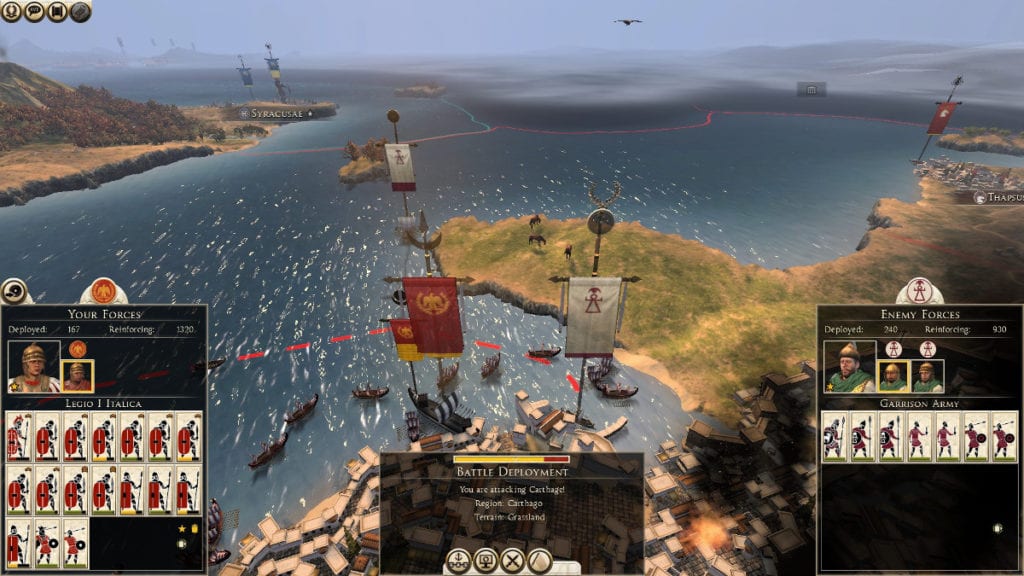
Of course, that still left us with the rest of Carthage’s empire to mop up, but without its capital, we had a feeling that wouldn’t give us too much trouble.
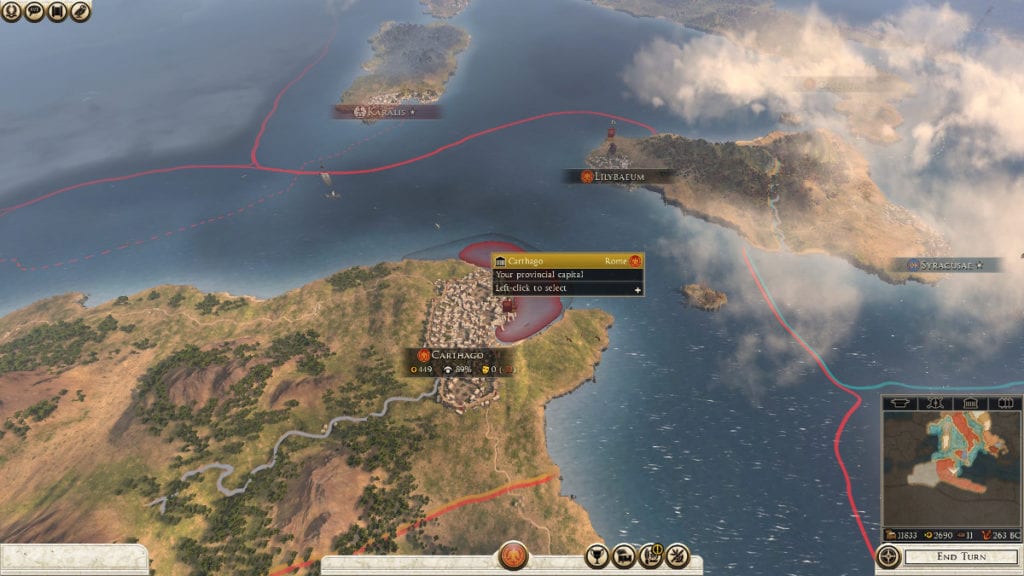
And with that, Total War: Rome 2 let us drastically shorten one of the most epic struggles of the ancient world. It saved thousands of lives and much immeasurable anguish, but it also was a lot less exciting than Mike Duncan’s podcast. That said, we still had a lot of fun and will be looking at several more important wars we can act out in this excellent game. If you have any suggestions, let us know in the comments below. We hope you enjoyed reading our little experiment as we enjoyed writing it.
Listen to this excellent Podcast below.

